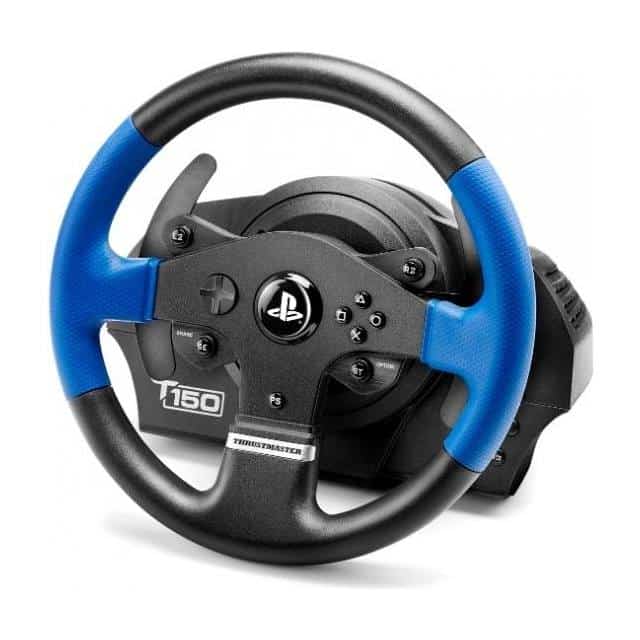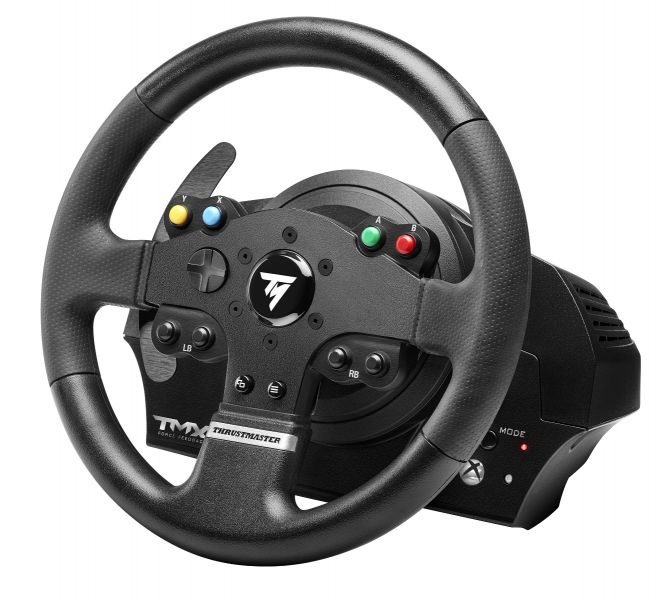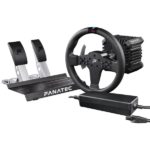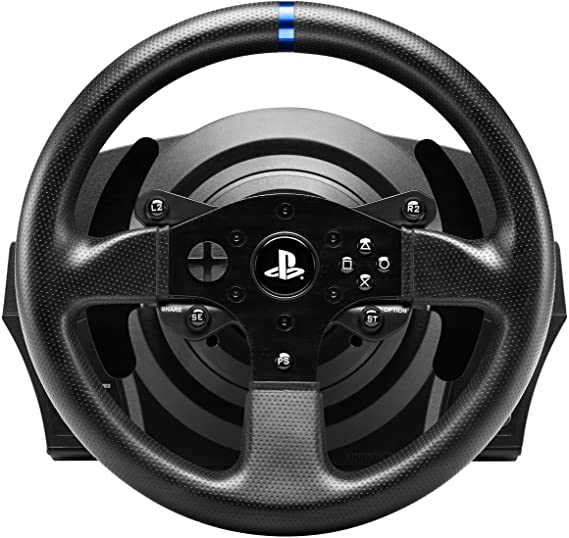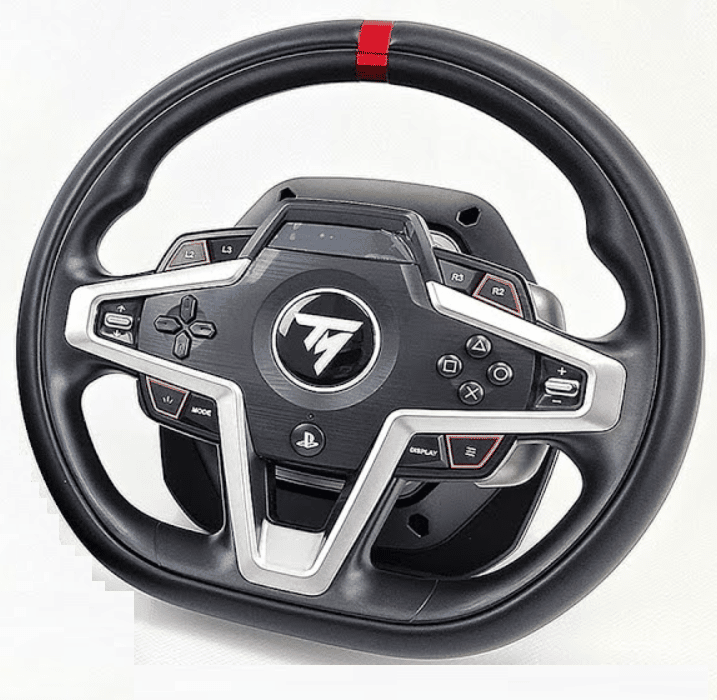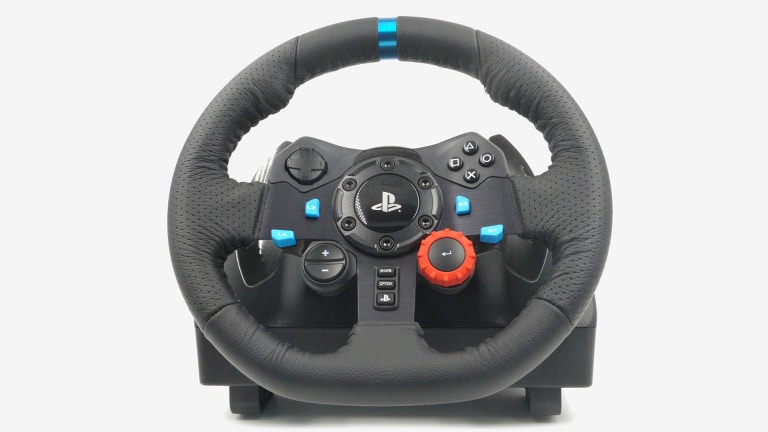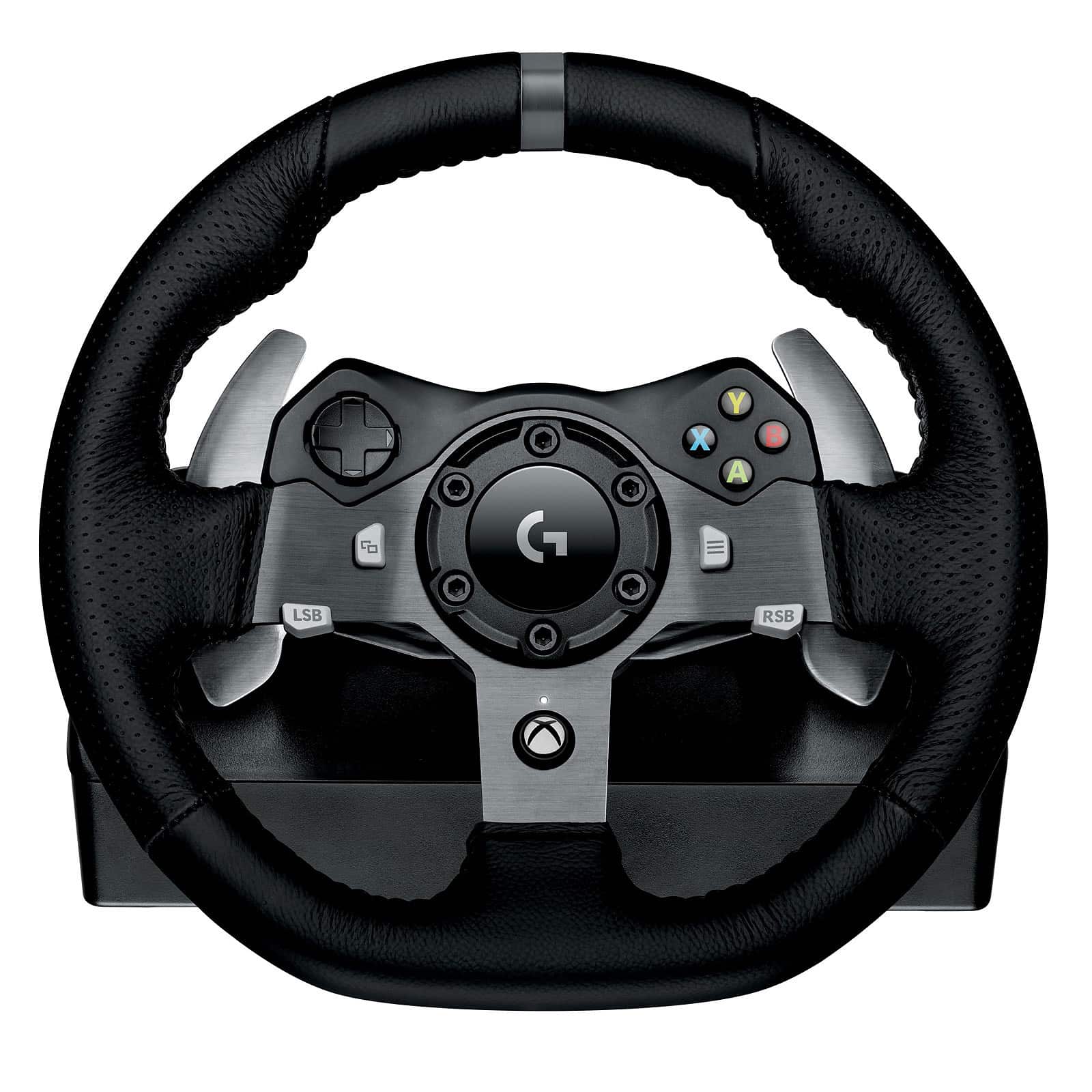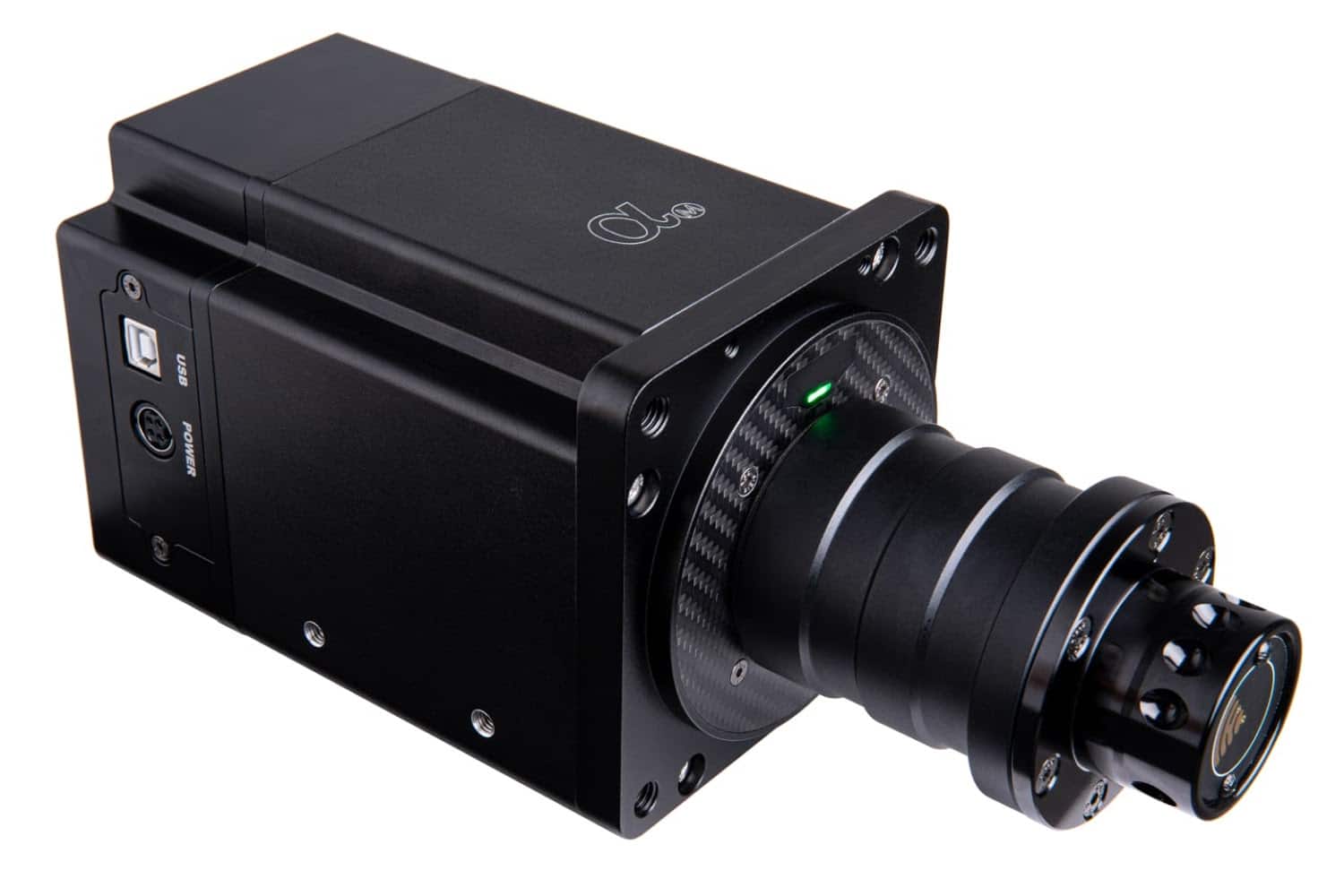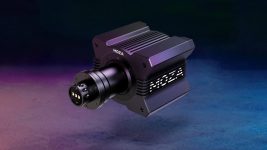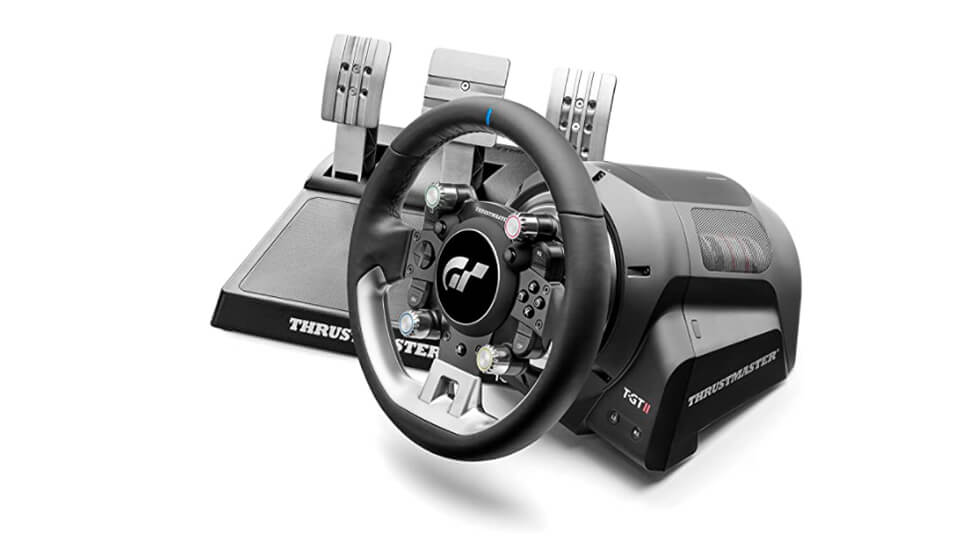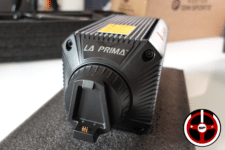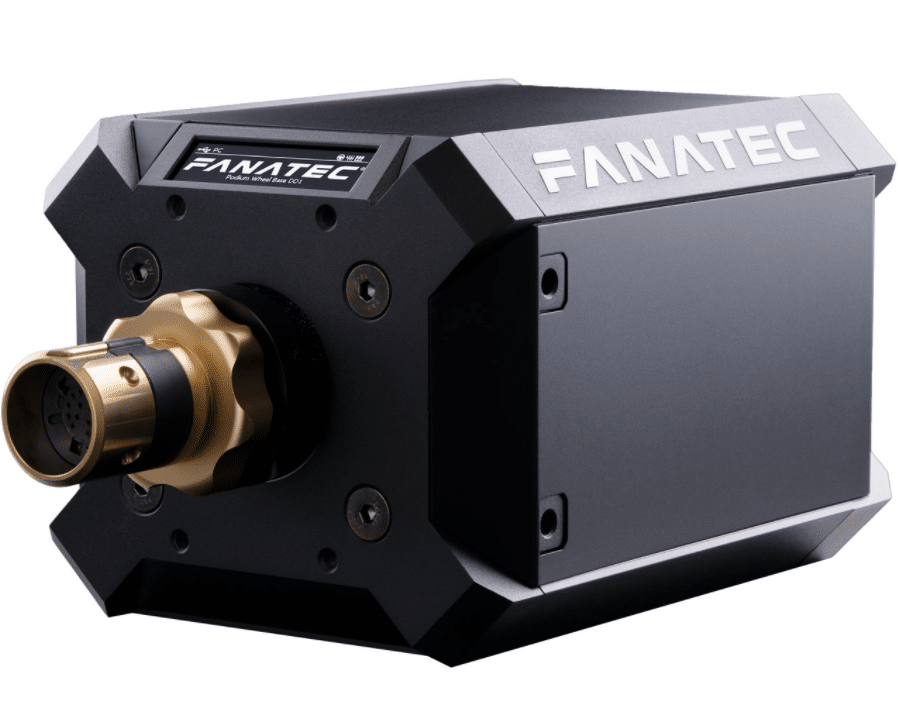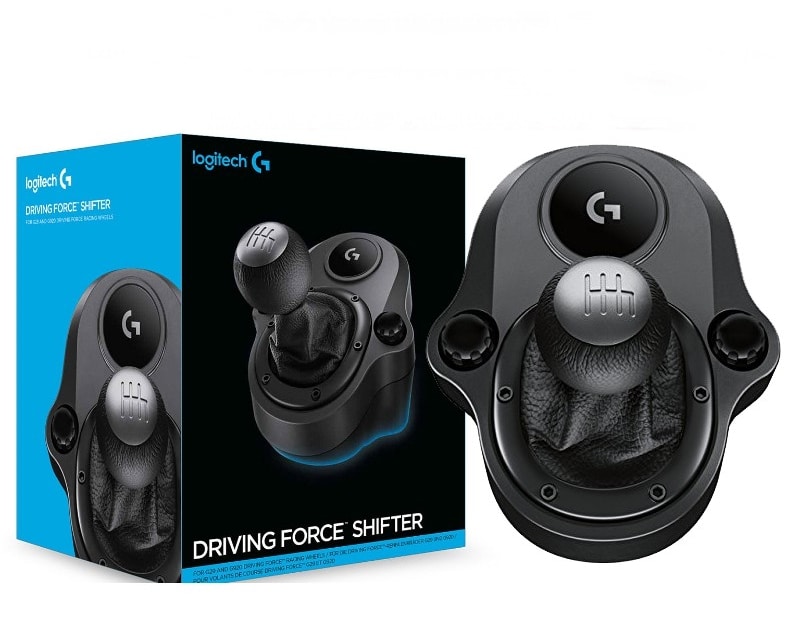Which simracing wheel to choose? The Guide!
You want to start or upgrade your sim racing setup and you’re rightly wondering which sim racing wheel to choose? I’ve been there myself. The range of products on offer is extremely vast, and the technical terms are sometimes quite hermetic for newcomers to car simulation. So, in this comprehensive guide, we’re going to take a hard look at what’s available on the market.
We’ll go through all the essential steps before you rush into a purchase you might regret. Compare models by price range, but also by the type of use you might make of them. And I hope that after reading this, you’ll finally be clear about which model is right for you!
What you need to know about sim racing wheels
When you’re just starting out, it’s very difficult to understand all the ins and outs of the simracing world. Direct Drive, torque rise, stepper motors… there’s no shortage of terms to make the discipline as obscure as it is interesting. Before going any further, let’s take a look at the main factors to be aware of before choosing a model.
Types of force feedback
force feedback is the system that lets you feel what the car is doing through the steering wheel. In a real vehicle, it’s your whole body that feels the vehicle move. You feel the G-forces of acceleration, cornering and braking. Your seat transmits chassis vibrations, your inner ear and eyes give you all the suspension movements, and so on.
In simracing, all you have is a screen, a wheel and pedals. So we have to transmit as much information as possible through the steering wheel so that you can understand what’s going on. All in a way that’s as easy as possible for the brain to decipher, and as fast as possible, of course.
In a base (the block on which the steering wheel itself is hung) there’s an electric motor that sends forces in one direction or the other through the steering shaft. But depending on your budget, the way the force is transmitted to the steering wheel won’t be the same. You can either use a Direct Drive, which transfers the force directly from the motor to the shaft. Or use gears or belts to fit a smaller motor and then reduce the force.
1. Gear systems: This is the cheapest system, Logitech has very often used this system on its steering wheels to reduce costs as much as possible. It’s very inexpensive but in terms of sensations, it’s the least fluid system.
2. Belt Models: Very often used by Thrustmaster, this is again a system which allows you to install a smaller motor and then increase its power using belts. The cost is higher than for gears but the fluidity is better and the general feeling much softer.
3. Hybrids: New models have appeared offering hybrid belt gears. A questionable choice because of course we can reduce costs… but with the appearance of entry-level Direct Drives, the game is not really worth the effort.
4. Direct Drive: This time we forget the tricks! The motor is directly connected to the steering shaft without any intermediary. This is the system which until 2021 was reserved for high-end models costing more than €1,000. Since then, the technology has been democratized and is becoming the norm. Direct Drives are infinitely more precise, responsive and smooth than other systems. But they generally remain more expensive because the required motors are much more powerful.
A budget between €50 and €200?
Unless you want to give a child his or her first steering wheel, I strongly advise against this type of product. The sensations are non-existent, and the quality of the materials is far from up to scratch. At this price, you’ll find nothing but “toys”.
If you’re on this kind of budget, wait. Save a little and go straight to the top of the range.
But if you really want to get into sim racing with a steering wheel at under €200, the only steering wheel worth buying is the Thrustmaster T150. But don’t expect miracles – you can’t buy a Ferrari for the price of a Twingo..
A sim racing wheel budget of between €250 and €500?
Then we can finally start talking! In this price bracket we find legendary models like the Thrustmaster T300RS, or the Logitech G29/G920 and G923. But without a doubt, the Fanatec CSL DD is the best-performing model in this range. And with good reason: it’s the package that offers a Direct Drive base, steering wheel and pedalboard for less than €500 inc VAT.
In terms of sensations, this panel already offers you plenty of pleasure! All these steering wheels feature force feedback and use gear or belt technology.
A sim racing wheel budget between €500 and €900?
In this price range, we’re starting to hit the top end of the consumer market. These include the Thrustmaster TGT, the soon-to-be-released T-GT 2 and the brand-new Fanatec CSL DD, which is clearly the best value on the market!
A steering wheel budget of €900 to €1,200
Don’t you just love beautiful objects? Clearly, you’re in the upper echelons of the market with Direct Drives of impressive precision and feel. The offer in this range is VERY wide. You can find almost all the models in the various tests we’ve carried out on the site or on our YouTube channel.
To avoid spoiling anything, you can modify your base later to transform it into a higher model… Oh yes, and also connect the steering wheels from almost every other sim racing brand in the world.
IN SHORT, if your budget is around €1,000, it is clearly this model that I advise you to g
To avoid overloading you with useless information, here are the REALLY good models we’ve had our hands on in this price range:
Questions to ask yourself BEFORE buying a sim racing wheel
Before you even think about which wheel to choose, you need to take the time to think things through. After all, your choice will have to be tailored to your tastes, budget and intended use. If I have one piece of advice to give you, it’s to avoid succumbing to brand marketing campaigns. That’s the best way to end up with an unsuitable steering wheel that will end up gathering dust in a cupboard… So before anything else, it’s important to ask yourself a few questions.
What’s your budget?
This is the question we often think of last, yet it’s the one that will define our range of possibilities. How much are you planning to invest in your steering wheel?
The answer doesn’t have to be too precise. In any case, most of us end up going over the initial budget because of (or thanks to) a crush… But it’s still essential to have an idea of the general budget you intend to put into your Setup. Without this, there are three options:
- Either you’ll find yourself dreaming of a wonderful model that’s totally out of your budget.
- Or you’ll be lured by brand marketing and end up with a model that’s not as good as your budget could have afforded!
- Or worse! You end up with a steering wheel within your budget… But “oops” the pedals or steering wheel were not included in the offer. And you’re totally out of budget..
What kind of driver are you?
When you decide to buy a steering wheel, it’s to get the maximum pleasure out of it. Now that you’ve defined your budget, we need to work out exactly what kind of driver you are.
Do you play more on consoles or PC?
Right from the start, you can make a big selection if you play only on consoles. Even though the range of drivers available for consoles is expanding rapidly, PC drivers have long had the upper hand. In fact, even today, very few Direct Drive models are available on Playstation or Xbox.
The choice of simulations is also very different. Apart from a few rare exceptions such as the Assetto Corsa series, Assetto Corsa Competizione or the old Project Cars 2, it’s hard to find pure simulations on consoles.
What kind of simulations do you use?
Well, here we are. What type of game are you planning to burn tires on? Are you more of an arcade gamer, with titles like Need For Speed, for example?
Or are you more of a sim-arcade fan, like the Forza or Gran Turismo series?
Maybe you’re more of a purist looking for the ultimate simulation? In which case you’re more of a fan of titles like Assetto Corsa, its Competizione variant, Iracing, or Rfactor 2?
Depending on your tastes, you won’t necessarily have the same expectations as to which steering wheel to choose. Buying a Fanatec DD1 to play NFS is a bit like buying a Hummer H1 to buy a baguette… And buying a Twingo for drifting is a bit like buying a T150 for Iracing championships…
Finally, don’t forget that your tastes can – and may – change over time. So think versatility, especially if you’re new to the world of simracing.
The rookie driver
Most of the time, the Rookie is looking for good value for money. Convincing sensations without having to close the PEL.
A steering wheel for novices should preferably be plug and play. Avoid wheels that need to be configured from top to bottom with dedicated software. What you want is to enjoy! With experience, you’ll be able to play around with the settings, but keep things simple at first.
Your steering wheel should also be easy to dismantle and store. Believe me, even if the people in your life also love simracing, they’ll also want to be able to walk through the living room without getting their feet tangled in meters of cable.
Think about resale too. If this is your first steering wheel, there’s no guarantee that you’ll really love simracing. Nor is there any guarantee that in 9 or 10 months’ time the steering wheel won’t end up completely forgotten in a cupboard.
Prefer Best Seller models like the Thrustmaster T300RS, the Fanatec CSL DD and its variant the GT DD Pro. These are safe values that do not lose too much value on the second-hand market and that you will resell quickly.
The experienced driver who wants an affordable Direct Drive
Okay, so you already know what you loved and hated about your old setup. Well, that’s going to make our job easier 🙂
The natural evolution today for a rider who’s improving his setup is to switch to a Direct Drive. Today, the best value for money is clearly the Fanatec CSL DD. Of course, there’s nothing to stop you checking out the top-of-the-range models from Fanatec or Simagic, for example, if your budget allows!
To avoid spoiling anything, you can modify your base later to transform it into a higher model… Oh yes, and also connect the steering wheels from almost every other simracing brand in the world.
IN SHORT, if your budget is around €1,000, it is clearly this model that I advise you to go for.
Regular or occasional rider?
How often you use your equipment will also shape your choice. So, which steering wheel should you choose according to how often you use it?
If you’re an avid pilot, you’ll need durable equipment that can withstand heavy play without overheating. As a reminder, on all entry-level and mid-range wheels, overheating = reduced power feedback. You’ll also have more fun and get a better feel for your vehicle with a more advanced steering wheel. As for the experienced driver, it’s best to go for Fanatec.
As an occasional rider, you’re looking for good value for money, so you don’t have to worry about setting it up every time. Prefer mid-range models like the T300RS, for example.
Are you going to install it on a cockpit or a desk?
What a good question! Do you know where you’re going to put this steering wheel? Almost all entry-level and mid-range steering wheels are equipped with clamps to secure the base to a table or desk.
Beware, however, of top-of-the-range Direct Drive models, which are often screwed directly onto a cockpit and require a cockpit of sufficient strength and rigidity.
In all cases, make sure that the fastenings on the steering wheel base will fit properly on your support. It’ll save you a trip to Ikea!
What are your expectations in terms of ergonomics and user comfort?
If you’re playing in the living room and your family’s in the way, it’s best to opt for models that are easy to store. Think about noise too. Some steering wheels are real vacuum cleaners! I’m thinking in particular of the G29, the T500RS and, to a lesser extent, the T300RS.
On the other hand, if you have a place dedicated to sim racing, you won’t have to worry about the noise of your base’s fan or its clutter. The sound will be quickly forgotten as soon as you’ve turned the wheel and put it away… It’s up to you!
How do I choose the right sim racing wheel?
Now that you’ve got the answers to all the questions we’ve discussed, it’s time to choose the right model. Surprise, there are tons of them! So let’s take a look at the technology inside.
A reminder of transmission types
Transmission is how energy is transferred from the motor to the flywheel. It’s relatively straightforward, and there are currently three main families of force feedback systems.
- Geared motors: like those used on Logitech steering wheels. This is an old technology which, despite the marketing announcements of certain brands, has not evolved in the last fifteen years. The main motor turns gears that drive the wheel axle. The major drawbacks are that, on some models, you can feel the notches in the motor, and the noise level is higher than on other systems.
- Belt-driven brushless: this is the technology most commonly used in mid-range flywheels. The main motor drives one or two belts which are connected to the wheel. The aim is to achieve a smoother feel than with a geared motor. But belts mean wear and a slight loss of precision between motor and wheel.
- Direct Drive: The best of the best. The motor is directly connected to the wheel. There’s no intermediary. The result is perfect transmission of information and often considerable power. Once limited to high-end models, this technology is now available for less than €1,000. Thank you, Fanatec! Don’t hesitate to read our Guide: Choosing a Direct Drive🙂
How will your brake make you go faster?
When you’re wondering which steering wheel to choose, think about the pedals too! That’s right, it’s your brake pedal that will make you go faster. Don’t believe me? Try a Load Cell pedal and you’ll see!
- Potentiometer pedal: The braking force applied in the simulation depends on the position of the pedal. Basically, the further you move the pedal forward, the harder it brakes. This is the technology found on most entry-level and mid-range cranksets. But that’s obviously not how things work in a real car…
- Load Cell pedal: The force applied depends on the pressure you apply to the pedal. Just like in a real car! This technology is found on all high-end pedalboards, and is slowly starting to appear on mid-range pedalboards.
But what’s the advantage of a Load Cell?
Well, as you know, the key to sim racing is performance, of course, but above all consistency. That’s where the Load Cell saves you time in the race. The sensor is much more precise than a potentiometer, but you won’t be using your brain in the same way either. Let me explain:
When you use a potentiometer pedal, you’re always trying to find “the spot” where your leg should be placed in space to apply the right force on the brake. This is not optimal. Our brains aren’t designed for it. With a Load Cell, you’ll find the muscle pressure you need to apply, which is much simpler for a human… And much more precise.
The result? You’ll brake more effectively and at the right place at the start of a turn, so you can get out of the corner faster! Personally, my first Load Cell brake saved me 0.3 (regular) seconds per lap in half a day.
The brand ecosystem
Wheels, pedals, H and sequential gearboxes, handbrakes… If the world of sim racing takes hold of your heart, you’ll certainly want to develop your setup. Not all brands offer the same range of add-ons.
Logitech, for example, doesn’t offer much apart from its Driving Force Shifter. That’s a bit light!
Thrustmaster Fanatec, Simagic Moza, or Asetek, offers a very extensive ecosystem, but at a higher budget. The quality, however, is often superior.

New or used?
When you’re trying to decide which steering wheel to buy, and budgetary considerations come between you and your dream steering wheel, you might want to take a look at what’s available on the second-hand market.
Beware! Second-hand doesn’t necessarily mean good business. Make sure the steering wheel isn’t too old (after 2 years, it can easily break down). If you can test it before you buy, check that all its buttons work, that it doesn’t make a suspicious noise and that it doesn’t get too hot.
If you can’t test it, ask to see the invoice to find out when it was purchased. Take a close look at the photos the seller sends you, and always ask for a few more.
Why should you do this? Because he’ll sometimes send you photos taken from a less advantageous angle that might reveal a small defect or wear.
On top of that, you’ll have less chance of being ripped off, as fake sellers usually put all their stolen photos in the ad. (And they’re usually too stupid to find other coherent photos of the product ^^)
Do you know which sim racing wheel to choose?
Great! Now that you know which sim racing wheel to choose, all you have to do is immerse yourself in a world of speed and mad sensations thanks to your new best friend.
If you’re still hesitating between several models, don’t hesitate to read our Tests and Reviews. Thanks to them, I’ll be happy to guide you🙂
And if this guide has helped you make your choice, don’t hesitate to share it with the community! You’ll be helping me to help even more passionate riders 😉

